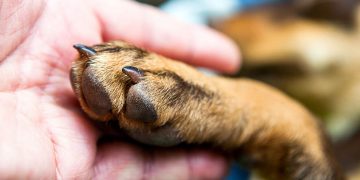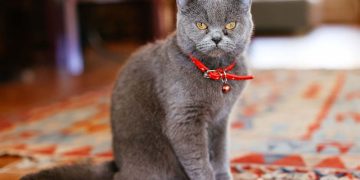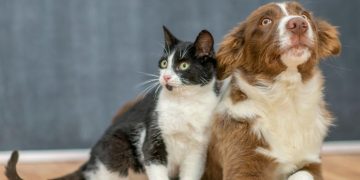Holsteins have been around for centuries and have the distinction of being one of the most popular breeds in America. They are known for their black and white coloring, which is pretty but not unusual in cattle. However, there’s a lot more to this breed than just its appearance — Holsteins are some of the smartest cows on earth!
The Holstein breed originated in Holland and northwestern Germany.
The Holstein breed originated in Holland and northwestern Germany. They were developed by crossing the Friesian with other breeds like the German Longhorn, Ayrshire, Jersey and Dutch black and white cattle. The Friesian was developed by crossing Dutch black and white cattle with local red and white cattle.
Holsteins are black and white but that doesn’t mean every Holstein is a Friesian.
You may have noticed that most Holstein cows are black and white. This is no accident—it’s actually a purposeful design choice by the breeders who created them.
It turns out that black and white patterns are quite common in cattle, especially in Europe. The Dutch originally developed the Holstein breed as early as 1680, but it didn’t become popular until much later. The name “Friesian” comes from an area in Holland where this type of cow was first found and developed to produce more milk than other breeds could at that time.
In 1819, some Friesian cows were imported into America by two brothers named Jacobus and Alexander Van Winkle who were trying to start up their own dairy farms on Long Island (where they’d previously emigrated). They had heard about these new “black-and-white” cows over there in Europe which produced more milk than any other breed available at that time–so they decided this would be their way forward!
The Dutch didn’t pay much attention to cattle until around the 14th century when the Friesians were created.
In the beginning, the Dutch didn’t pay much attention to cattle. After all, they were a nation of fishermen and sailors who didn’t need beef for sustenance. But things changed in the 14th century when some enterprising farmers decided to crossbreed their local cows with Frisian stock from what is now Germany. This new breed became known as the Friesian and caught on quickly with other farmers because it was large, black-and-white colored with long horns like an oxen—a highly prized trait at that time.
The Dutch are still using these cattle today in an effort to keep their national herd pure: after all, why mess around with something that works so well?
The name “Friesian” comes from the region in Holland where the breed was developed.
The name “Friesian” comes from the region in Holland where the breed was developed. Although they are called “Friesians” today, they were originally known as Frisians. This is because the original Frisian people have been living in this area since before written history began. The word “Friesian” is a derivative of “Frisian.”
In the early 1800s, the Friesians were imported to America.
The Holstein-Friesian was imported to America in the early 1800s, and it was not long before they completely dominated the dairy industry. These cows were bred for their ability to produce large amounts of high quality milk.
The Friesians were imported from Holland and northwestern Germany where they had been developed as a dairy breed. Friesians were known for their docility, great temperament and ability to thrive even under difficult conditions because they are so hardy, healthy animals.
A Friesian-Holstein cross was produced for dairy purposes.
The Friesian-Holstein cross was produced for dairy purposes. Both the Holstein and Friesian breeds were developed for the same purpose: to produce more milk than other cattle. The initial objective of this experiment was to find a way to increase the milk production of our beloved Holsteins, but it turned out that both breeds were so successful at their job that they had no reason to combine anymore! The Friesian-Holstein cross was such a great success that it’s still used today in modern dairy farming.
It wasn’t until 1885 that the first book of standards for the Holstein cattle was published by the American Holstein Association.
The first book of standards for the Holstein cow wasn’t published until 1885. The American Holstein Association was founded in 1884, and it was this group that published the first book of standards containing photographs of well-known cattle. The association’s goal was to improve the quality of dairy cows by establishing a standard for each breed.
Holsteins are bred specifically for their outstanding milk producing abilities.
Holstein cows are bred specifically for their outstanding milk producing abilities. The breed’s ancestors hail from the Netherlands and Germany, where they were used as dairy cattle.
Holsteins produce a high-butterfat content in their milk (about four percent), which means they yield more cream when making butter or cheese. In addition to this desirable trait, Holsteins are also very docile and easy to handle; unlike some other cow breeds which prefer to kick over buckets of water instead of drinking them!
The Holstein cow has a very long gestation period of 280 days (almost 9 months).
The gestation period is the time it takes for a cow to deliver a calf. Cows are pregnant for about 280 days, which is much longer than any other breed of cattle. This is why Holstein cows are not good for meat production, but they are good at milk production because they need more time to grow their babies.
One cow can produce more than 2,500 gallons of milk per year!
One cow can produce more than 2,500 gallons of milk per year. That’s a lot of milk!
A gallon is equal to 4 quarts and 16 ounces. If one cow could fill up your bathtub with her milk, it would take about 12 days for her to do so.
A Holstein cow averages about five lactations (milking cycles) during her lifetime.
You may have heard that a cow’s life expectancy is about 20 years, but what does that mean? It means she’ll be able to produce milk for about five of those years. A lactation is a period of time during which the cow is milked, and it usually lasts from 240 to 305 days. The average cow produces about 5,000 gallons of milk over her lifetime.
Not only are Holsteins gorgeous cows, but they have remarkable stats as well!
You’re about to learn some interesting facts about the Holstein cow. You might also learn that these cows are pretty amazing, and you should be able to say “I knew that!” when someone asks you what kind of cow they are.
The Holstein cow is one of the most popular dairy breeds in the world, though it has been bred with other breeds to create a variety of other cattle (and even pigs!). They were first used as draft animals in Germany, where they originated. Today, they are considered by many to be a symbol of purity due to their black and white coat colors—you may have seen them on packaging for fluid milk products at your local grocery store!
Conclusion
The Holstein cow is one of the most recognizable breeds around, and it’s easy to see why. Known for their exceptional milk production and black-and-white coloration, these cows are so popular that they’ve even been made into a statue in Queens! Whether you’re a farmer or just someone who loves animals, there are plenty of reasons why Holsteins deserve some respect from us all.
Read More:

























